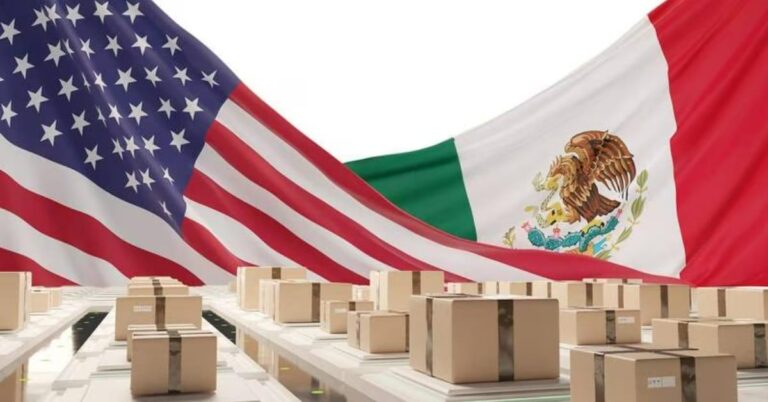Mexico and Brazil are intensifying efforts to strengthen their trade relationship, aiming to diversify their economic partnerships beyond the dominant influence of the United States and China. As two of Latin America’s largest economies, both countries recognize the strategic importance of expanding bilateral commerce to reduce dependency on traditional markets and stimulate regional growth. This emerging collaboration signals a shift in the region’s trade dynamics, with Mexico and Brazil seeking to capitalize on their complementary industries and shared economic interests to forge a more resilient and integrated economic alliance.
Mexico and Brazil Aim to Diversify Trade Partners Beyond US and China
Both Mexico and Brazil are actively pursuing strategies to broaden their trade networks, reducing heavy reliance on the United States and China. This shift is driven by growing concerns over geopolitical tensions and supply chain vulnerabilities that have recently spotlighted the risks of concentrated trade dependencies. Government officials from both countries have emphasized the importance of establishing stronger economic ties with emerging markets in Asia, Europe, and Africa, aiming to enhance resilience and unlock new growth opportunities.
Key sectors targeted for diversification include manufacturing, agriculture, and technology, with negotiations underway to enter trade agreements and enhance bilateral partnerships globally. Analysts highlight that this multi-faceted approach could reshape Latin America’s economic landscape by:
- Increasing export variety and volume
- Attracting foreign direct investment from diverse sources
- Encouraging innovation through new collaborative ventures
| Country | Top Export Partner 2023 | Emerging Trade Focus | Projected Growth % |
|---|---|---|---|
| Mexico | United States | Southeast Asia | 6.5% |
| Brazil | China | European Union | 5.8% |
Opportunities and Challenges in Strengthening Latin American Economic Integration
Mexico and Brazil’s recent efforts to intensify trade relations signal a significant shift in Latin America’s economic landscape, aiming to diversify beyond the traditional heavy reliance on the US and China. This strategic realignment presents unique opportunities, such as:
- Market expansion: Access to new consumer bases and enhanced intra-regional commerce.
- Supply chain integration: Streamlined manufacturing and logistics to boost competitiveness globally.
- Innovation collaboration: Shared technology and knowledge transfer among key industries.
However, challenges impede the full realization of this vision. Economic disparities, regulatory complexities, and political fluctuations across Latin American nations add layers of difficulty. Key hurdles include:
- Protectionist policies: National interests sometimes overshadow mutual benefits, complicating tariff and non-tariff barrier reductions.
- Infrastructure gaps: Insufficient transport and digital frameworks limit seamless trade flows.
- Divergent economic priorities: Varied development stages make harmonization of standards a laborious process.
| Opportunity | Potential Impact | Challenge |
|---|---|---|
| Trade Diversification | Reduced dependency on US/China | Existing bilateral commitments |
| Regional Innovation Hubs | Boost in high-tech exports | Funding constraints |
| Harmonized Regulations | Easier cross-border transactions | Legal framework disparities |
Strategic Recommendations for Enhancing Bilateral Trade and Regional Supply Chains
To capitalize on growing economic opportunities, Mexico and Brazil should prioritize the alignment of regulatory frameworks to reduce trade barriers and facilitate smoother customs procedures. Harmonizing standards related to product safety, environmental compliance, and intellectual property can significantly lower costs for exporters and importers alike. Additionally, strengthening infrastructure connectivity-through investments in ports, railways, and digital logistics platforms-will be critical in enhancing the efficiency of regional supply chains. Such initiatives can help both nations pivot away from overreliance on the US and China by building resilient, diversified trade networks across Latin America.
Key strategic actions to consider include:
- Creating joint industrial parks and innovation hubs to stimulate cross-border manufacturing collaboration.
- Developing bilateral trade financing programs to assist small and medium enterprises in accessing new markets.
- Establishing a bi-national working group focused on digital trade facilitation and supply chain transparency.
| Sector | Opportunity | Potential Impact |
|---|---|---|
| Automotive | Integrated parts sourcing | Cost reduction & efficiency |
| Agribusiness | Joint R&D in crop resilience | Enhanced export competitiveness |
| Technology | Shared innovation platforms | Regional digital economy growth |
Insights and Conclusions
As Mexico and Brazil pursue closer economic integration, their efforts signal a strategic shift towards diversifying trade partnerships beyond traditional giants like the US and China. By strengthening bilateral ties, these two major Latin American economies aim to create new opportunities for investment, innovation, and regional growth. The coming months will be critical in determining whether this push can reshape trade dynamics in the Americas and offer a model for South-South cooperation amid a rapidly evolving global economic landscape.




